
6 minute read
HOME) SCHOOL’S OUT
South Burlington High School was just one area school that stepped up to meet challenges during the pandemic.
Students and teachers model resiliency and adaptability
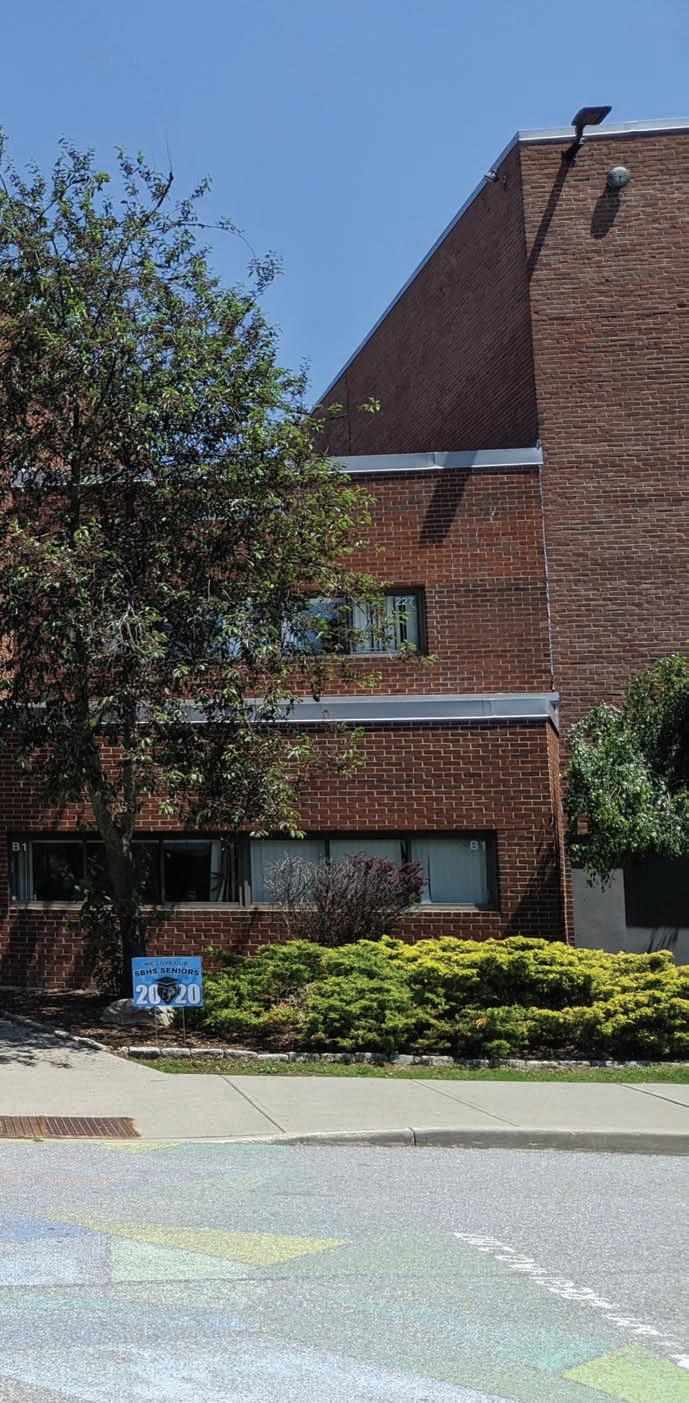
Well, we made it. Three months after the words that echoed around the state— Governor Phil Scott’s announcement that Vermont schools would close as a result of the global COVID-19 pandemic—school finally ended and summer vacation started. For every student, teacher, parent, and support staff, it was a school year turned completely upside-down.
While very few people skated through the coronavirus pandemic unaffected, few organizations were forced to change the way schools did while maintaining standards. The original announcement—made on a Friday— took effect on the following Wednesday. Consider the enormity of the task, the adapting, and the adjustment, that comes with—in just five days—completely upending the way education is delivered to over 80,000 schoolchildren across Vermont. And then keeping it up over three months.
To educators, students, and parents, congratulations to all. We made it.
Clockwise from above: One thing that didn't change was the traditional SBHS graduation printed program. During remote learning, Principal Patrick Burke often "dressed up" for school meetings and recorded daily video messages for students from his home office. The 2020 graduation procession was a car parade through town. Parents decorated cars while friends and neighbors cheered on the graduates, who were en route to the fairgrounds.

GAME PLAN FOR SUCCESS Sprinkled throughout every academic calendar are surprise fire drills and clear-thehallway drills. Students, teachers, administrators, and support staff know what to do in emergency situations because they practice emergency situations. I asked South Burling- ton High School principal Patrick Burke if there was a pandemic “game plan” prior to this spring.
“In fact, there was,” says Mr. Burke. In 2010 the state of Vermont coordinated a series of exercises in response to the outbreak of the H1N1 virus (known as swine flu). “We prepared for the potential for H1N1 to have an impact on the scale that COVID-19 has had,” he says.
So Mr. Burke—like all administrators in Vermont—had a basic game plan, a roadmap. Although plenty has changed, particularly in technology (read: Zoom meetings, broadband Internet, interactive documents, and Google Classrooms), Vermont schools were prepared. In the weeks leading up to the actual closure,
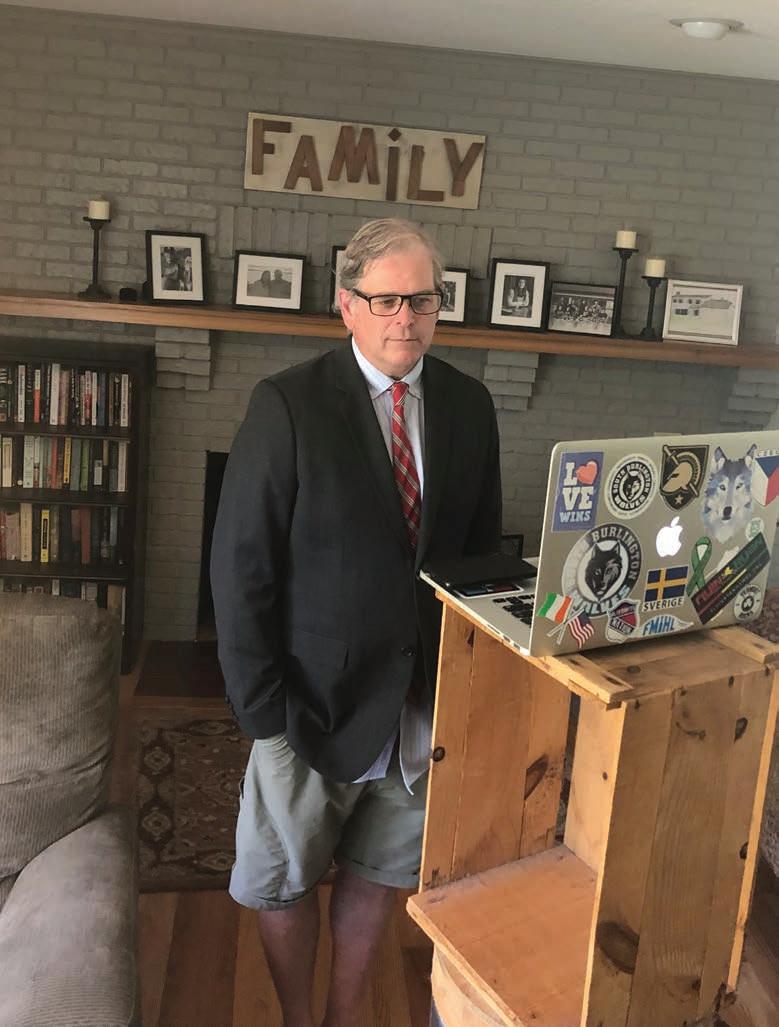
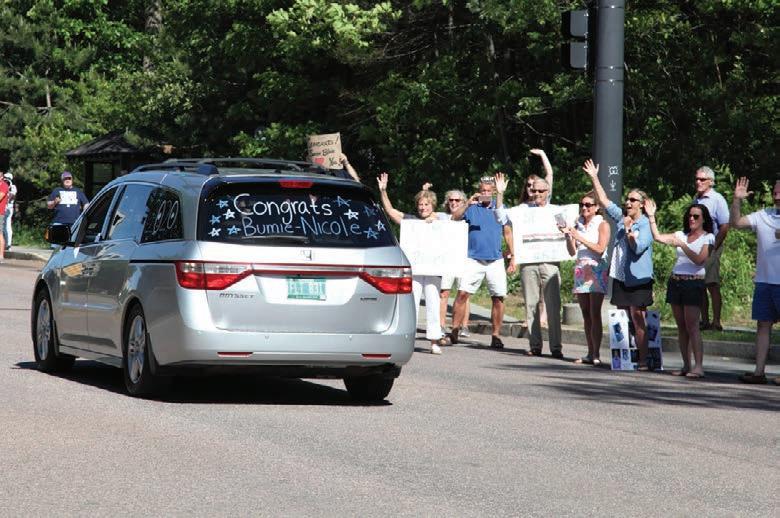
teachers in South Burlington and elsewhere began stepping up their online presence in case the worst happened. As we all know, it did happen. Was there an industry, business, or organization nimble enough to execute wholesale change as effectively as schools?
“There were growing pains,” says Mr. Burke. “They came from the sincere desire from teachers to forge ahead as if everything were the same.” But things weren’t the same, obviously. “Student feedback was that they were buried,” he says. Educators continued delivering content while constantly adapting to student needs.
STAYING FOCUSED Learning from home wasn’t easy. “I’m ready to be done,” says South Burlington tenth grader (now eleventh grader) Graeham Spitellie. The nice weather didn’t help.
“The challenge is staying focused,” he says. “You feel like you have so much time, so it’s easy to procrastinate.”
In the case of South Burlington, communication between educators and students, beginning with a nightly email from Mr. Burke, went as well as could be hoped. Most South Burlington students had access to Internet—but not all. Distance learning, however, did shine a spotlight on inequities that exist even in South Burlington. “For many kids in our building, home is not a space that is conducive to learning,” says Meghan Sweet, South Burlington High School’s director of guidance and counseling.
From the beginning, says Ms. Sweet, teachers and school counselors kept active lists of students who seemed to be getting lost, falling behind, or who were otherwise disengaging. Then the challenge was figuring out how to get them reengaged. “Some kids thrived under the lack of structure,” says Ms. Sweet. “Some did not.”
In conversations with friends, Graeham was aware of kids across the engagement spectrum. “We talked on Xbox,” he says of his friends. “I have friends who were doing seven hours of schoolwork every day.” Some, he notes, did less.
TEACHING AT HOME Down the road from South Burlington in Richmond, on the morning of Tuesday, March 16, I sat at my kitchen table, furloughed from
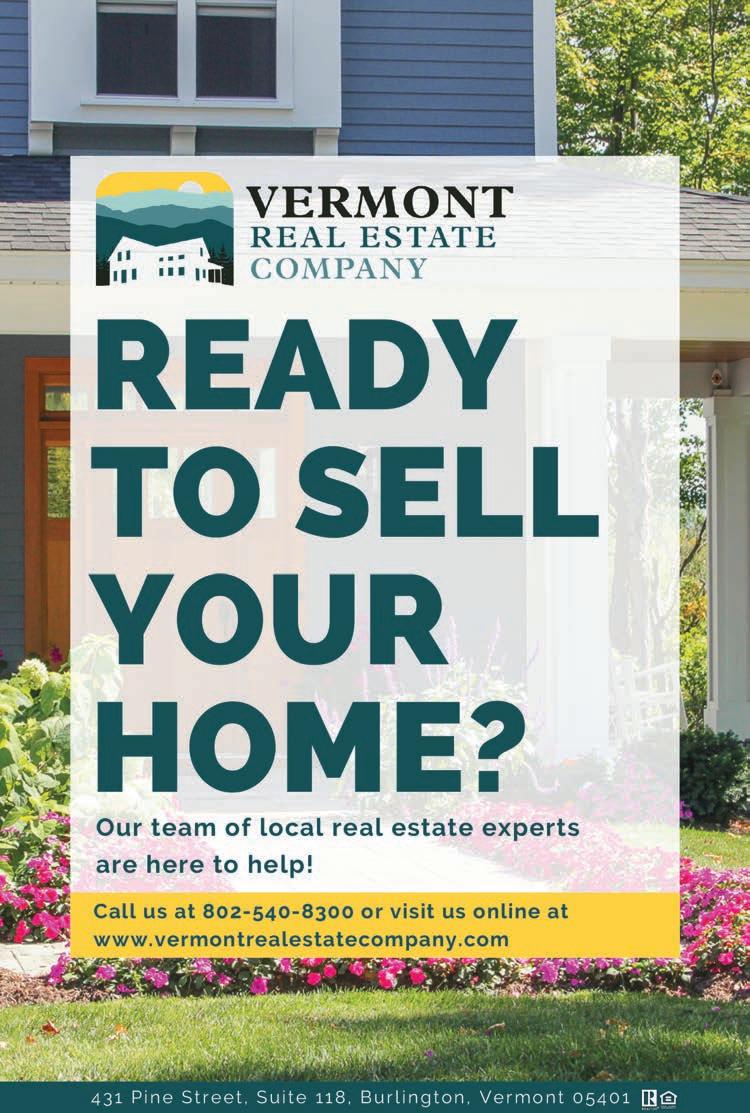
LOOK FOR IT WHERE YOU GET YOUR FAVORITE BREW
Your guide to LOCAL BREWERIES, CIDERIES, DISTILLERIES, AND WINERIES

Clockwise from above: Principal Burke opened the graduation at the Champlain Valley Fairgrounds by acknowledging the contributions of crisis responders and essential workers. Twins Gabriella and Jack Ambrosino celebrate walking across the graduation stage together. Principal Burke dressed for the occasion by sporting an SB Wolves branded mask. Windows of SBHS were decorated by family and friends to celebrate the Class of 2020.
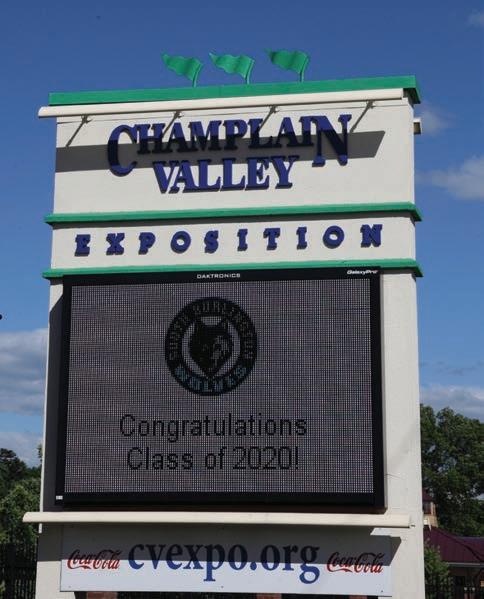

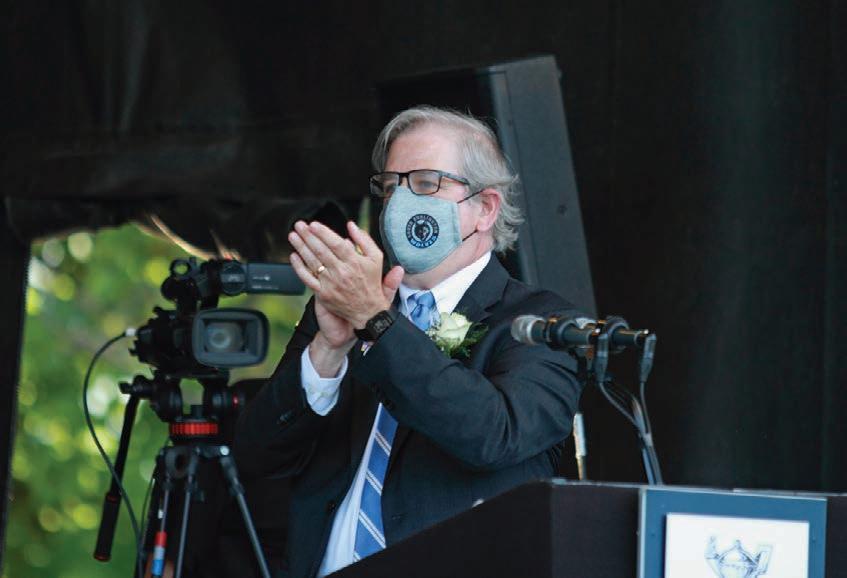
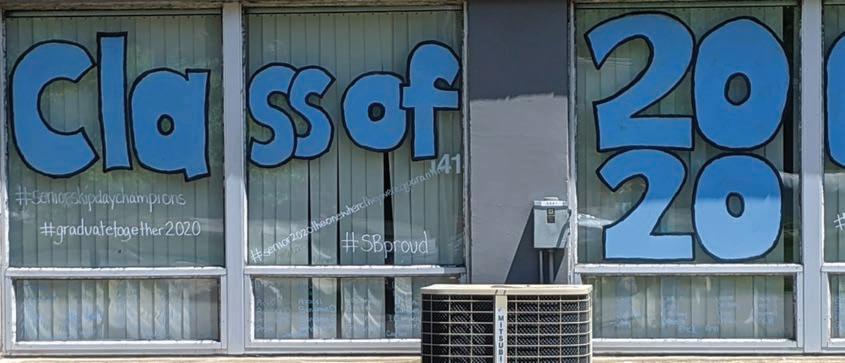
work. And my kids, a first grader and a preschooler, rather than getting on the bus, were home with me. And in swooped their teachers, offering take-home activity bags, online and emailed guidance, weekly schedules, Google Meets, and resource upon resource for our kids. Schools continued to provide school lunches for those on meal plans.
“I have loved seeing how flexible my students have been through all of this,” says Amy Poor, first grade teacher in Richmond. “There has been a huge adjustment for everyone to watching lessons through a screen, while having to do all of this with maybe their favorite toy staring at them or a sibling wanting to play.” She notes that she has met parents, grandparents, siblings, dogs, cats, rabbits, baby chicks, and stuffies during Google Meets with her students. “Their creativity has been remarkable,” she says.
Meanwhile, Mrs. Poor (and all teachers) recorded video lesson upon lesson, sometimes hiking to a rocky crag to read a story about mountains, sometimes on her front porch in a rainstorm, and seemingly in every room in her home. Her demeanor? Always positive, uplifting, and encouraging. Teachers have been more than educators; they have been trailblazers and guides during a time of upheaval—often while homeschooling their own children. Parents and students everywhere have benefited from their leadership.
For students, parents, teachers, and school administrators, the 2020 school year will go down as a year of adjustment, change, and keeping an open mind. It required teamwork, technology, and adaptability. (Early on, Graeham actually interrupted an online class while he tutored his parents on how to connect his sixth grade sisters to a class via a Zoom meeting. “They’re learning,” he says.)
While nobody knows exactly what next school year will look like, educators at all levels are working to illuminate this. Meanwhile, Mr. Burke remains impressed with the way students dealt with the sacrifices they had to endure this year. “They put community ahead of self,” he says.
And that, for all of us, may be the biggest lesson of the whole experience. ✿
MAKING IT WORK BUSINESSES ADAPT TO THE NEW NORM BUY LOCAL AREA MERCHANTS NEED YOUR SUPPORT
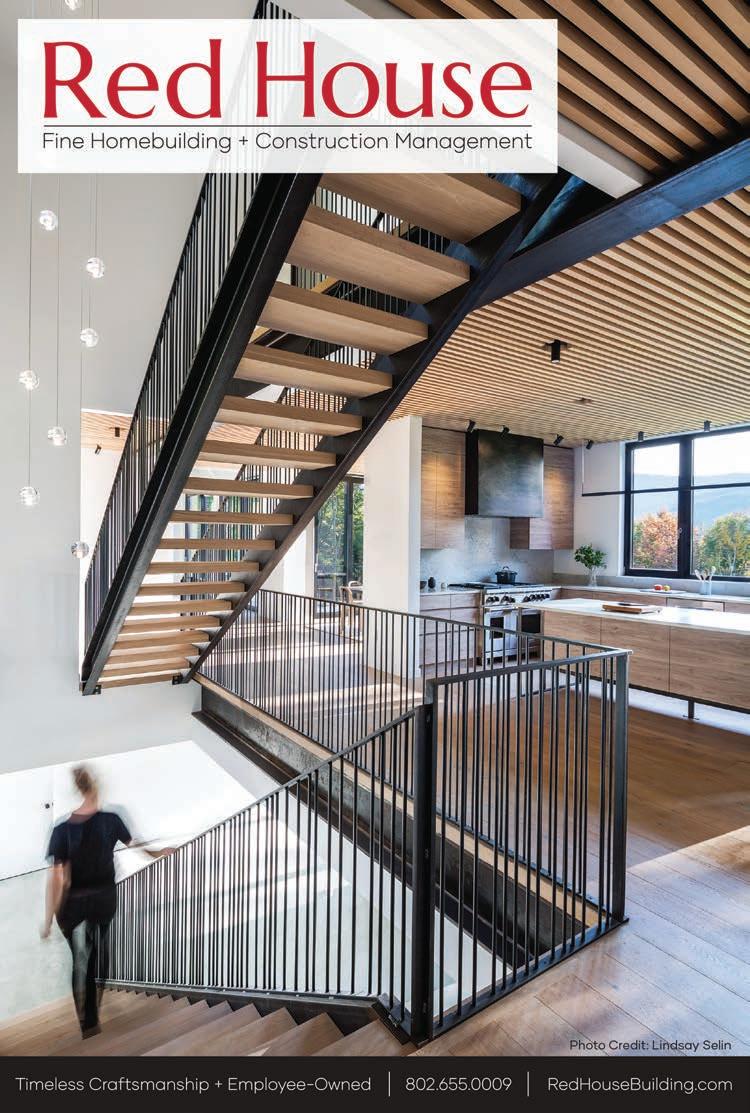
SUMMER 2020
LIFE AND CULTURE IN THE CHAMPLAIN VALLEY
VOLUME 13 NO 3
SWEET VERMONT TREATS THRIVING IN A DIFFICULT CLIMATE

SUBSCRIBE TODAY! Don’t Miss a Single Issue
ONE YEAR SUBSCRIPTION ONLY $ 19.95 PLUS TAX (4 ISSUES) Pay Online at www.bestofburlingtonvt.com or send your check to BEST OF BURLINGTON, 32 Hermit Thrush Lane, South Burlington, VT 05403


